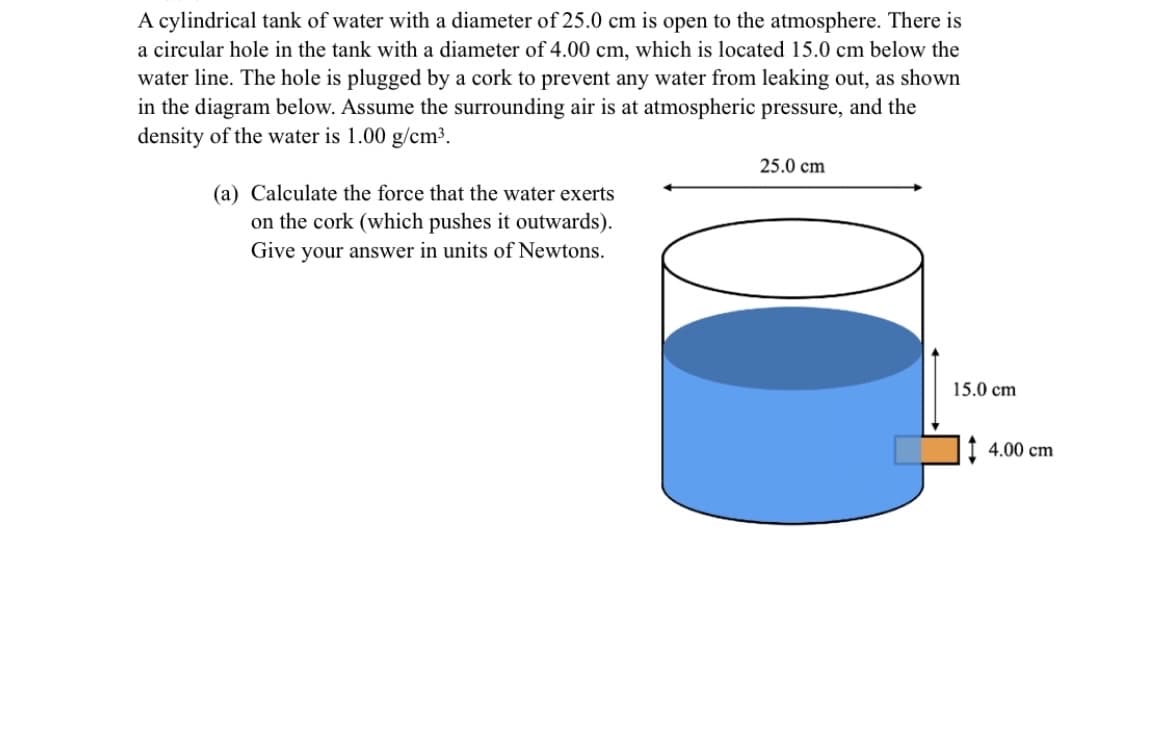(a) Calculate the force that the water exerts on the cork (which pushes it outwards). Give your answer in units of Newtons.
(a) Calculate the force that the water exerts on the cork (which pushes it outwards). Give your answer in units of Newtons.
Related questions
Question
(b) Now suppose that the cork is removed and water begins to flow out of the
hole. Immediately after the cork is removed, what is the speed of the water
coming out of the hole? Give your answer in units of cm/s. Hint: you will
need to use Bernoulli’s equation and the equation of continuity to solve this.

Transcribed Image Text:A cylindrical tank of water with a diameter of 25.0 cm is open to the atmosphere. There is
a circular hole in the tank with a diameter of 4.00 cm, which is located 15.0 cm below the
water line. The hole is plugged by a cork to prevent any water from leaking out, as shown
in the diagram below. Assume the surrounding air is at atmospheric pressure, and the
density of the water is 1.00 g/cm³.
25.0 cm
(a) Calculate the force that the water exerts
on the cork (which pushes it outwards).
Give your answer in units of Newtons.
15.0 cm
I 4.00 cm
Expert Solution
This question has been solved!
Explore an expertly crafted, step-by-step solution for a thorough understanding of key concepts.
Step by step
Solved in 3 steps with 1 images
